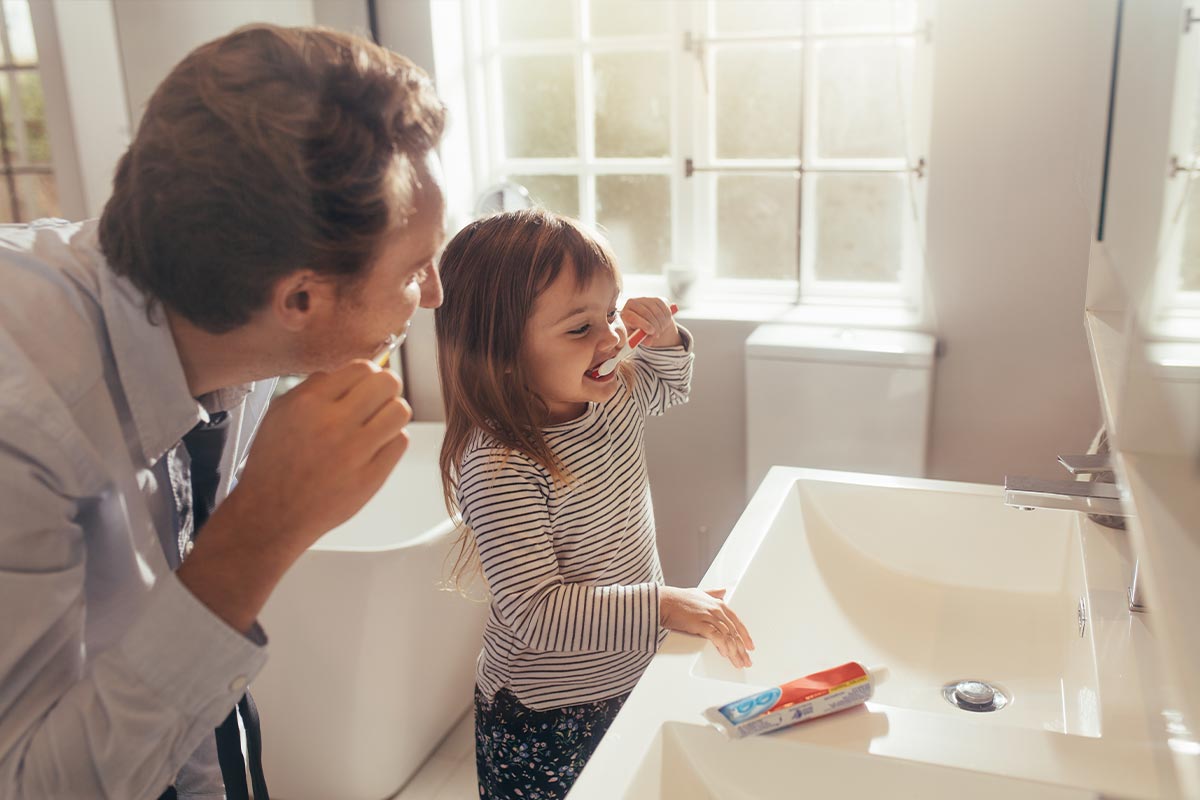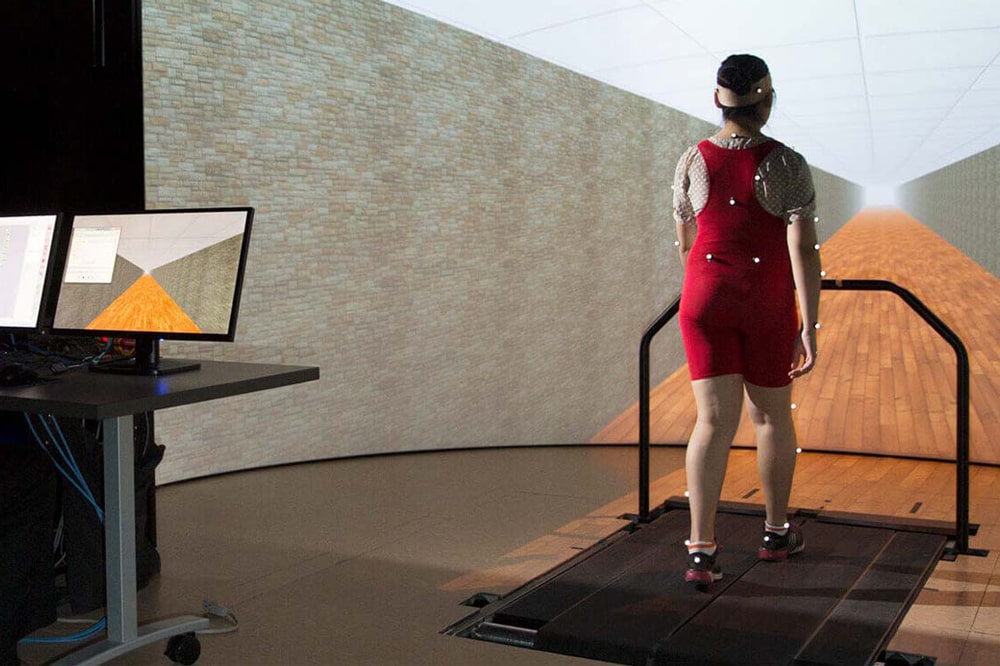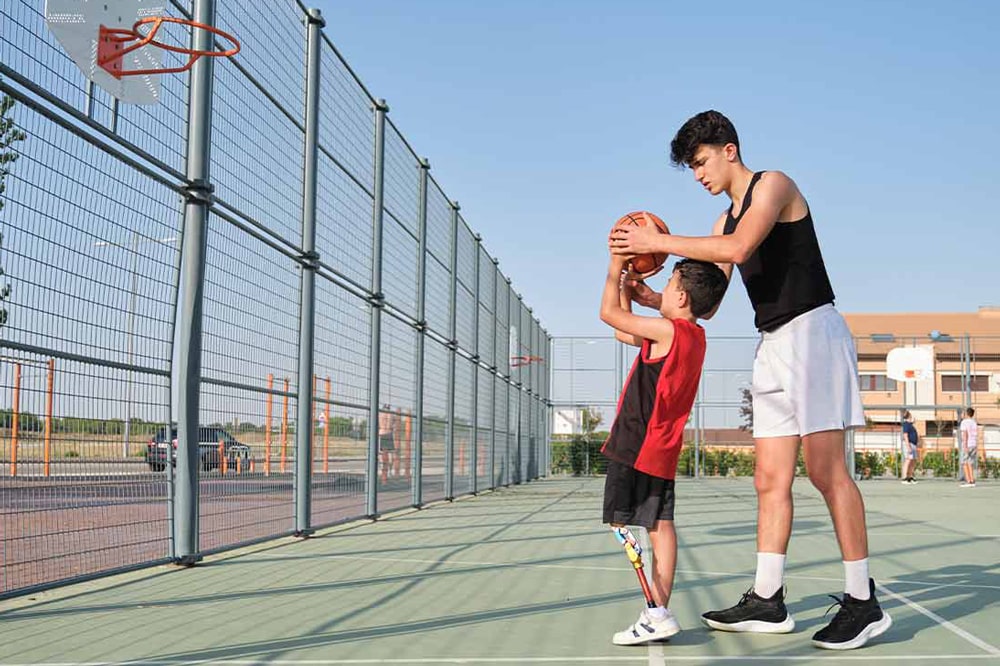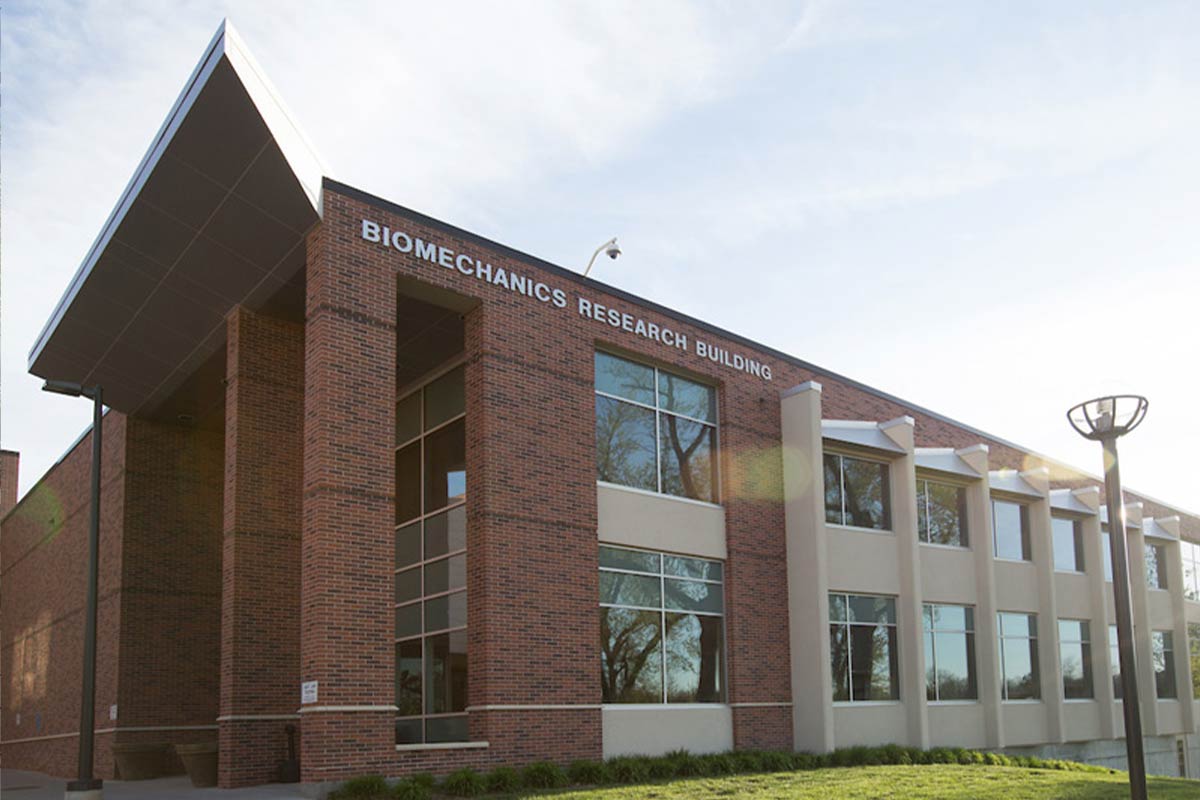up next Nick Stergiou
Nick Stergiou
Biomechanics Research
How Biomechanics is Moving Nebraska Forward
By Jackie Ostrowicki
January 2022
It’s morning. Your alarm clock blares its wake-up call. You sit up, reach to turn it off, swing your feet over the side of the bed and stand up. You walk to the bathroom, taking step after step. You brush your teeth, moving the toothbrush back and forth. Up and down. You bend over to rinse.
All this movement—involving muscles, brain, senses and environment—takes place in the span of minutes and continues to happen as you go about your day. Yet, the majority of us never think about how we move. But for Dr. Nick Stergiou and his visionary team at the University of Nebraska Omaha, it’s all they research—biomechanics, which is the study of human movement, and the forces that produce it.

But why?
If Stergiou and his team’s previous groundbreaking research is any indication, their work is vital to those suffering from movement-related disorders. Their lab incorporates principles from engineering, physiology and mathematics to understand the complexity of how humans integrate muscles, nerves, and the environment to accomplish movement.
Breakthroughs in Helping People Move Again
Stergiou’s work isn’t just about creating groundbreaking inventions. It’s about bettering lives. His research has impacted the training techniques of surgeons, as well as the treatment of health conditions like peripheral arterial disease.
“I sleep well at night because we do so many good things for so many people.”
As director of the Biomechanics Research Building at UNO, Stergiou heads a team of faculty who study areas such as gait rehabilitation, fall prevention and improving physical function for the elderly.
One example is researcher Nate Hunt, who studies balance in adults—especially what causes people to slip. He watches when people slip, then studies their reactions, knowing there are good and bad responses. How animals move and stabilize themselves can provide direction. Hunt studies the interaction between fox squirrels’ cognitive and movement control capabilities, how their bodies are built, and how those capabilities interact to allow the squirrel to move as it does. He then looks at what humans can learn from fox squirrels to improve the way they get about—and, most importantly, get about without falling.

Collaborators, Inventors and Innovators
Not only do Stergiou and his team help individuals with movement-related pathologies, they support community collaborations related to exercise physiology, physical activity, and sports medicine. Stergiou also leads a department of innovators who—through the study of motion—invent devices to solve health-related challenges. For instance, robotic shorts that make running easier, 3D-printed prosthetics that save families thousands, or a “gait analysis system” than can predict your risk of a dangerous fall.
The Biomechanics Research Building houses an intriguing collection of labs and research environments—all of which are geared toward studying the mechanical laws relating to the movement or structure of living organisms. Here are just a few:
- A virtual reality laboratory, equipped with a treadmill that has 6 degrees of freedom of movement—not only up and down, but sideways as well.
- A machine shop large enough for people to drive their vehicles inside. Not to have their oil changed, but to have sensors installed that will assist scientists studying how we drive when we get older. Scientists can track acceleration time for older motorists and the types of abrupt reactions they make while driving, which will determine who should drive and who shouldn’t.
- An underwater treadmill that allows scientists to test the effects of gravity at different levels other than the earth’s 9.8g. Scientists can study, for example, how buoyancy and subsequently decreased gravity could help rehabilitate injuries by determining how much weight the joint can bear.

Finally, the building has a laboratory with 3-D printing capabilities, used to build prostheses for children with congenital deformities. Congenital deformities create an imbalance in a person’s brain; a prosthesis could impact the way the brain works. The laboratory houses a 3-D printer that, instead of plastic, creates in metal.
From the Lab to the Marketplace
Beyond improving the quality of life for so many patients, these inventions are getting noticed on a commercial level. Since growing from a small laboratory to a 57,000-plus square-foot facility, UNO’s biomechanics program was awarded the UNeMed Innovator of the Year award. UNeMED—established in 1991 by the Board of Regents of the University of Nebraska—helps push innovations beyond the laboratory and into the marketplace.

“All these inventions produce an economic engine in terms of jobs and in terms of growth,” Dr. Stergiou said. Four biotechnology companies are looking to locate in the Biomechanics Research Building. “They want to work side-by-side with our people, shouldering in research greatness.”
In an economic analysis from the UNO Department of Economics, it was estimated that the center brought an economic impact of $1.5 million to the Omaha metropolitan area in its first two years of operation. And that number will only rise.
Creating Momentum in Biomechanics
When Nick Stergiou began teaching at UNO in 1996, the word “biomechanics” wasn’t part of the university’s lexicon. He has since secured two of the largest research grants in UNO history—National Institutes of Health grants worth more than $10 million each—and a private gift to build the 23,000-square foot Biomechanics Research Building.
The building, home to the first center in the world dedicated exclusively to research in human movement, opened in 2013. After Stergiou’s programs outgrew the original space, it underwent a 30,000 square-foot expansion, made possible with another private gift.
“It motivates me immensely to help young people to have wonderful careers and make a difference. When I see our students come up with new therapies, new interventions, new ways to help other people—it’s very rewarding.”
The added space translates to eight additional research labs, a data processing center, and workspace for the 13 faculty members, 35 undergraduate students and 25 graduate students who call the building home. The second, record-breaking grant he obtained in 2019 provides biomechanics students with a chance to conduct cutting-edge research alongside senior clinical NIH-funded scientists. It also enables the department to bring additional funded investigators from various disciplines to UNO’s campus.
Stergiou says the department isn’t done growing—a theme he repeats often.
“If anyone thinks we are finished, I beg to differ.”
Discover our Podcast Series
The “Leading Nebraska” podcast shares the stories of the researchers, students, teachers and others across the University of Nebraska's four campuses who are making an impact. From teachers and doctors to engineers and ag experts, these Nebraska leaders are touching lives and making a difference.
Sorry, no stories match your filters.
Please adjust your filters above to view more stories.
Find Your Nebraska State Senator
Get started by entering your address below. Next, you'll receive information on who your senator is—and how to reach him or her.
Making a call only takes a few minutes and sends a strong message to your state senator. Your senator may not be able to take the call, but you can speak to the legislative aide who works for the senator. They will log your call, take a message and pass it on. Keep your conversation brief, and be sure to cover these essential points:
- Introduce yourself as a constituent in their district and provide your name.
- Be clear that you're calling about your support for the University of Nebraska System.
- Share your story about how the University has impacted you or your family. A personal story is hard to ignore. Explain why it's important to you that your senator invests in the University of Nebraska. Again, keep it brief and to-the-point.
- Ask for your opinion to be noted. Politely finish the call by thanking the senator or legislative aide for their time.
Send an Email
Sending a written message to your state senator is an easy way to engage your representative. They're more concise and easier to respond to, and they're more likely to be viewed by the senator. If you can, send a personalized message with these essential points. Keep your message brief (a paragraph or so).
- Write a personal, attention-getting subject line that lets the senator know your topic— "Investing in the University of Nebraska System" or "Supporting the University of Nebraska System"
- Introduce yourself as a constituent in their district; provide your name.
- Be clear that you're writing about your support for the University of Nebraska System
- Share your personal story about how the University has impacted you or your family. Explain why it's important to you that your senator invests in the University of Nebraska. Again, keep it brief and to-the-point.
- Ask if your senator will support the University moving forward.
- Indicate that you'd appreciate a reply and thank your senator for their time.
You Just Made a Difference
Keep making a difference by becoming an NU Advocate. As an Advocate, you'll receive communications about important issues and legislative bills concerning the University of Nebraska—and you'll be the first to hear about upcoming advocacy events. And, we'll let you know when you need to raise your voice again.
COOKIE USAGE:
The University of Nebraska System uses cookies to give you the best online experience. By clicking "I Agree" and/or continuing to use this website without adjusting your browser settings, you accept the use of cookies.

